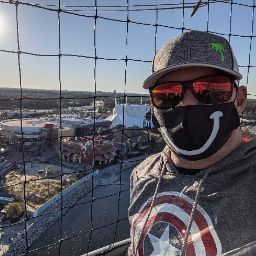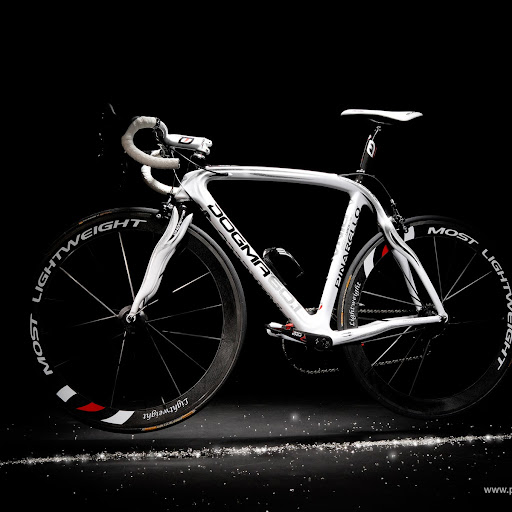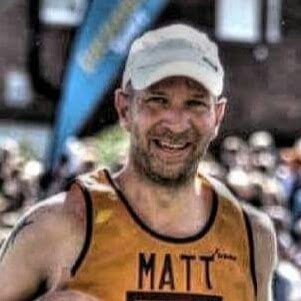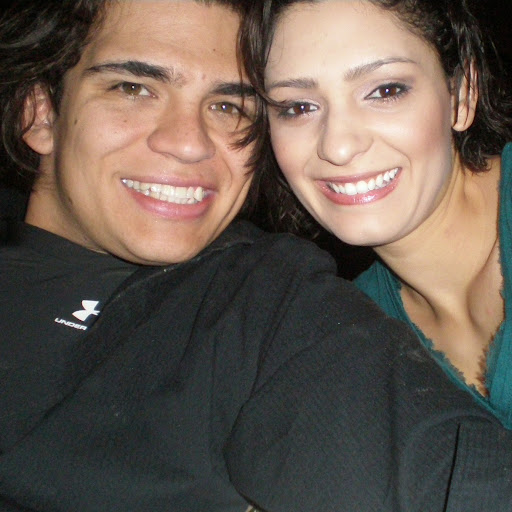Matthew B Floyd
age ~37
from Albany, GA
- Also known as:
-
- Bernard M Floyd
- Floyd Matthew
Matthew Floyd Phones & Addresses
- Albany, GA
- Mableton, GA
- Powder Springs, GA
- Atlanta, GA
- Austell, GA
Work
-
Company:Teleperformance usa - Albany, GAJul 2010
-
Position:Customer service representative
Education
-
School / High School:Albany Technical College- Albany, GAMay 2009
Us Patents
-
Systems And Methods For Controlling A Fleet Of Drones For Data Collection
view source -
US Patent:20220406012, Dec 22, 2022
-
Filed:Aug 25, 2022
-
Appl. No.:17/896032
-
Inventors:- Bloomington IL, US
Matthew L. Floyd - Alpharetta GA, US -
International Classification:G06T 17/05
G06Q 50/16
B64C 39/02
G06Q 40/08
G05D 1/10 -
Abstract:A damage identification (DI) system for identifying property damage may include a drone fleet including several autonomous or semi-autonomous drones communicatively coupled together and a DI computing device. Each drone may collect drone-collected damage data, including image data. The DI computing may assign a geographical region to the drone fleet. The drone fleet may automatically navigate to, and then within, the geographical region to detect potential damage to properties. The DI computing device may further receive drone-collected damage data associated with a property within the geographical region from the drone fleet when the drone fleet determines the property is actually or potentially damaged, generate aggregated damage data associated with the property based at least partially upon the drone-collected damage data, and/or store the aggregated damage data in a blockchain structure associated with the property for damage assessment of the property.
-
Blockchain-Based Systems And Methods For Self-Managed Peer Group Insurance
view source -
US Patent:20220391990, Dec 8, 2022
-
Filed:Aug 15, 2022
-
Appl. No.:17/887945
-
Inventors:- Bloomington IL, US
Matthew Lewis Floyd - Alpharetta GA, US -
International Classification:G06Q 40/08
G06Q 20/36
G06F 16/27 -
Abstract:A blockchain-based social insurance (“BBSI”) computer system for creating a social insurance group is provided. The BBSI computer system includes at least one processor in communication with at least one memory device. The processor is programmed to receive social insurance group data and define at least one qualifying rule for joining the social insurance group. Each member of the social insurance group must satisfy the at least one qualifying rule to become a member of the social insurance group. The processor is programmed to generate at least one social insurance group blockchain including the qualifying rule and cause to be displayed on a user device the social insurance group data for review by a candidate member. The processor is also programmed to receive a registration message from the candidate member including a request to become a member of the group.
-
Blockchain Systems And Methods For Managing Usage-Based Contracts
view source -
US Patent:20220261920, Aug 18, 2022
-
Filed:May 3, 2022
-
Appl. No.:17/735824
-
Inventors:- Bloomington IL, US
Matthew L. Floyd - Alpharetta GA, US -
International Classification:G06Q 40/08
G06F 16/27 -
Abstract:A system for generating and managing usage-based contracts using blockchains configured to (i) store an insurance contract for a currently occurring or upcoming trip, where the insurance contract is to insure the driver, passenger, and/or vehicle during the trip, where the insurance contract includes terms, conditions, or other clauses (e.g., mileage limitations, limitations on autonomous vehicle operation, etc.) and is in a blockchain structure, and where several nodes store copies of the insurance contract in the blockchain structure; (ii) receive, from the driver and/or (autonomous) vehicle, a requested modification of one or more terms, conditions, or other clauses of the insurance contract, (iii) transmit the requested modification to an insurance auction network, (iv) receive a response to the request from the insurance auction network; and (v) store the response in a new block in the insurance contract (e.g., a smart contract) to facilitate providing trip insurance in a transparent manner.
-
Blockchain Controlled Multi-Carrier Auction System For Usage-Based Auto Insurance
view source -
US Patent:20230008881, Jan 12, 2023
-
Filed:Sep 14, 2022
-
Appl. No.:17/932116
-
Inventors:- Bloomington IL, US
Matthew L. Floyd - Alpharetta GA, US -
International Classification:G06Q 40/08
G06F 16/27
G01D 9/00 -
Abstract:A system for generating and managing usage-based contracts using blockchains configured to (i) store an insurance contract for a currently occurring or upcoming trip, where the insurance contract is to insure the driver, passenger, and/or vehicle during the trip, where the insurance contract includes terms, conditions, or other clauses (e.g., mileage limitations, limitations on autonomous vehicle operation, etc.) and is in a blockchain structure, and where several nodes store copies of the insurance contract in the blockchain structure; (ii) receive, from the driver and/or (autonomous) vehicle, a requested modification of one or more terms, conditions, or other clauses of the insurance contract, (iii) transmit the requested modification to an insurance auction network, (iv) receive a response to the request from the insurance auction network; and (v) store the response in a new block in the insurance contract (e.g., a smart contract) to facilitate providing trip insurance in a transparent manner.
-
Blockchain Controlled Multi-Carrier Auction System For Usage-Based Auto Insurance
view source -
US Patent:20230005074, Jan 5, 2023
-
Filed:Sep 13, 2022
-
Appl. No.:17/931820
-
Inventors:- Bloomington IL, US
Matthew L. Floyd - Alpharetta GA, US -
International Classification:G06Q 40/08
G06F 16/27
G01D 9/00 -
Abstract:A system for generating and managing usage-based contracts using blockchains configured to (i) store an insurance contract for a currently occurring or upcoming trip, where the insurance contract is to insure the driver, passenger, and/or vehicle during the trip, where the insurance contract includes terms, conditions, or other clauses (e.g., mileage limitations, limitations on autonomous vehicle operation, etc.) and is in a blockchain structure, and where several nodes store copies of the insurance contract in the blockchain structure; (ii) receive, from the driver and/or (autonomous) vehicle, a requested modification of one or more terms, conditions, or other clauses of the insurance contract, (iii) transmit the requested modification to an insurance auction network, (iv) receive a response to the request from the insurance auction network; and (v) store the response in a new block in the insurance contract (e.g., a smart contract) to facilitate providing trip insurance in a transparent manner.
-
Systems And Methods For Controlling A Fleet Of Drones For Data Collection
view source -
US Patent:20210295457, Sep 23, 2021
-
Filed:Mar 9, 2018
-
Appl. No.:15/917247
-
Inventors:- Bloomington IL, US
Matthew L. Floyd - Alpharetta GA, US -
International Classification:G06Q 50/16
G06Q 40/08
B64C 39/02
G05D 1/10
G06T 17/05 -
Abstract:A damage identification (DI) system is described for identifying property damage. The DI system includes a drone fleet having a plurality of drones configured to collect damage data, and a DI computing device. The DI computing device is configured to assign each drone to a respective subarea of a geographical region, where each drone is configured to navigate to the assigned subarea to detect damage to properties. The DI computing device is further configured to receive initial sensor data associated with a first property from a first drone of the plurality of drones, determine the first property is damaged based on the initial sensor data wherein the drone fleet navigates to the first property in response to the determination, receive drone-collected damage data associated with the first property from the drone fleet, and generate aggregated damage data associated with the first property based upon the drone-collected damage data.
-
Autonomous Vehicle Maneuver System For Emergency Vehicles And Non-Standard Traffic Flow
view source -
US Patent:20210074152, Mar 11, 2021
-
Filed:Oct 15, 2020
-
Appl. No.:17/071161
-
Inventors:- Bloomington IL, US
Matthew L. Floyd - Alpharetta GA, US -
International Classification:G08G 1/0965
G05D 1/00
G05D 1/02
G08G 1/0967 -
Abstract:Systems and methods are provided that may to cause autonomous navigation of autonomous vehicles in the case of non-standard traffic flows such as police stops, emergency vehicle passing, construction sites, vehicle collision sites, and other non-standard road conditions. An entity associated with the non-standard traffic flow (e.g., an emergency vehicle, road sign, barrier, etc.) may transmit or broadcast a control signal to be received (or otherwise detected) at one or more autonomous vehicles. Each autonomous vehicle, upon receiving the control signal, may autonomously navigate in accordance with the control signal, thus mitigating or eliminating dangers associated with non-standard traffic flows.
-
Systems And Methods For Controlling A Fleet Of Drones For Data Collection
view source -
US Patent:20200234493, Jul 23, 2020
-
Filed:Feb 10, 2020
-
Appl. No.:16/786299
-
Inventors:- Bloomington IL, US
Matthew L. Floyd - Alpharetta GA, US -
International Classification:G06T 17/05
G06Q 50/16
B64C 39/02
G06Q 40/08
G05D 1/10 -
Abstract:A damage identification (DI) system for identifying property damage may include a drone fleet including several autonomous or semi-autonomous drones communicatively coupled together and a DI computing device. Each drone may collect drone-collected damage data, including image data. The DI computing may assign a geographical region to the drone fleet. The drone fleet may automatically navigate to, and then within, the geographical region to detect potential damage to properties. The DI computing device may further receive drone-collected damage data associated with a property within the geographical region from the drone fleet when the drone fleet determines the property is actually or potentially damaged, generate aggregated damage data associated with the property based at least partially upon the drone-collected damage data, and/or store the aggregated damage data in a blockchain structure associated with the property for damage assessment of the property.
Name / Title
Company / Classification
Phones & Addresses
Manager
SEMANTHIA B-RN CONSULTING, LLC
20 Hickory Br Dr, Acworth, GA 30101
24 Richland Ln, Palm Coast, FL 32164
24 Richland Ln, Palm Coast, FL 32164
Resumes

Matthew Floyd
view sourceLocation:
United States

Matthew Floyd
view sourceLocation:
United States

District Manager, Us West At Igus, Inc.
view sourceLocation:
United States

Anesthesia Technical Consultant
view sourceLocation:
Greater Atlanta Area
Industry:
Information Technology and Services

Matthew Floyd Mableton, GA
view sourceWork:
Teleperformance USA
Albany, GA
Jul 2010 to Jan 2011
Customer Service Representative Albany Technical College
Albany, GA
May 2009 to Aug 2010
Help Desk Technician
Albany, GA
Jul 2010 to Jan 2011
Customer Service Representative Albany Technical College
Albany, GA
May 2009 to Aug 2010
Help Desk Technician
Medicine Doctors

Matthew Floyd
view sourceSpecialties:
Nephrology
Work:
Carolina Nephrology PA
203 Ml Ave, Greenville, SC 29605
8642711844 (phone), 8642712147 (fax)
Carolina Nephrology PA
727 SE Main St STE 180, Simpsonville, SC 29681
8642711844 (phone), 8642712147 (fax)
203 Ml Ave, Greenville, SC 29605
8642711844 (phone), 8642712147 (fax)
Carolina Nephrology PA
727 SE Main St STE 180, Simpsonville, SC 29681
8642711844 (phone), 8642712147 (fax)
Languages:
English
Spanish
Spanish
Description:
Dr. Floyd works in Simpsonville, SC and 1 other location and specializes in Nephrology. Dr. Floyd is affiliated with Bon Secours St Francis Downtown, Greenville Memorial Hospital, Hillcrest Memorial Hospital, Pelham Medical Center and Spartanburg Regional Medical Center.

Matthew Alan Floyd
view sourceSpecialties:
Internal Medicine
Education:
University of South Carolina(2009)
Googleplus

Matthew Floyd
Work:
Slueth, LLC - Shady Character (2001)
Education:
Colorado State University - Computer Science, Thunderridge Highschool

Matthew Floyd
Work:
Mr Rug - Rug Boy
Education:
Hogwarts
About:
<3 luff life. <3 my sxc bird.
Tagline:
Im Maffew I like crayons andd fancy Daniel Bryan :0
Bragging Rights:
Im cool

Matthew Floyd
Work:
Freelance - Art Director
Education:
Grand Valley State University - Film & Video
Tagline:
Inverted Pessimism.

Matthew Floyd

Matthew Floyd
About:
Www.redbubble.com/people/mattf...
Tagline:
Www.redbubble.com/people/mattf...

Matthew Floyd

Matthew Floyd

Matthew Floyd
Youtube
Myspace
Flickr
Classmates

Matthew Floyd
view sourceSchools:
East Ascension High School Gonzales LA 1995-1999
Community:
Rhonda Henderson

Matthew Floyd
view sourceSchools:
Rib Lake High School Rib Lake WI 1996-2000

Matthew Floyd
view sourceSchools:
East Ridge Elementary School Chattanooga TN 1979-1986, East Ridge Middle School Chattanooga TN 1986-1988
Community:
Missy Bolt, Gregory Gilmore, Harvey King

Matthew Floyd
view sourceSchools:
Perrydale School Amity OR 2001-2005
Community:
Jennifer Helvie, Elizabeth Tippens, Jamie Witham, Ronald Vincent, Jesi Young

Matthew Floyd
view sourceSchools:
De Valls Bluff High School De Valls Bluff AR 1997-2001
Community:
Jessica Alford, Joyce Brathwaite, Patty Springer, Austin Smith, Sara Vanhouten, J D, Montique Anderson, Jodie Baugh, Scott Jackson

East Ridge Elementary Sch...
view sourceGraduates:
Michele Pendleton (1970-1971),
Nicole Williams (1993-1996),
Matthew Floyd (1979-1986),
Candy Jackson (1974-1980),
Sonja Shepherd (1957-1963)
Nicole Williams (1993-1996),
Matthew Floyd (1979-1986),
Candy Jackson (1974-1980),
Sonja Shepherd (1957-1963)

Bearisto School, Vernon, ...
view sourceGraduates:
Matthew Floyd (1985-1989),
Matt Martell (1984-1992),
Deborah McCluskey (1957-1963)
Matt Martell (1984-1992),
Deborah McCluskey (1957-1963)

East Ridge Middle School,...
view sourceGraduates:
Jeremy Willhoit (1994-1997),
Manisha Patel (1989-1990),
Rebecca Tapley (1988-1991),
Aisha Loach (1988-1991),
Matthew Floyd (1986-1988)
Manisha Patel (1989-1990),
Rebecca Tapley (1988-1991),
Aisha Loach (1988-1991),
Matthew Floyd (1986-1988)

Floyd Matthew
view source
Matthew Floyd II
view source
Matthew Kaos Floyd
view source
Matthew Floyd Taylor
view source
Matthew Floyd
view source
Matthew David Floyd
view source
Matthew Floyd Miller
view source
Matthew Franklin Floyd
view sourceGet Report for Matthew B Floyd from Albany, GA, age ~37













